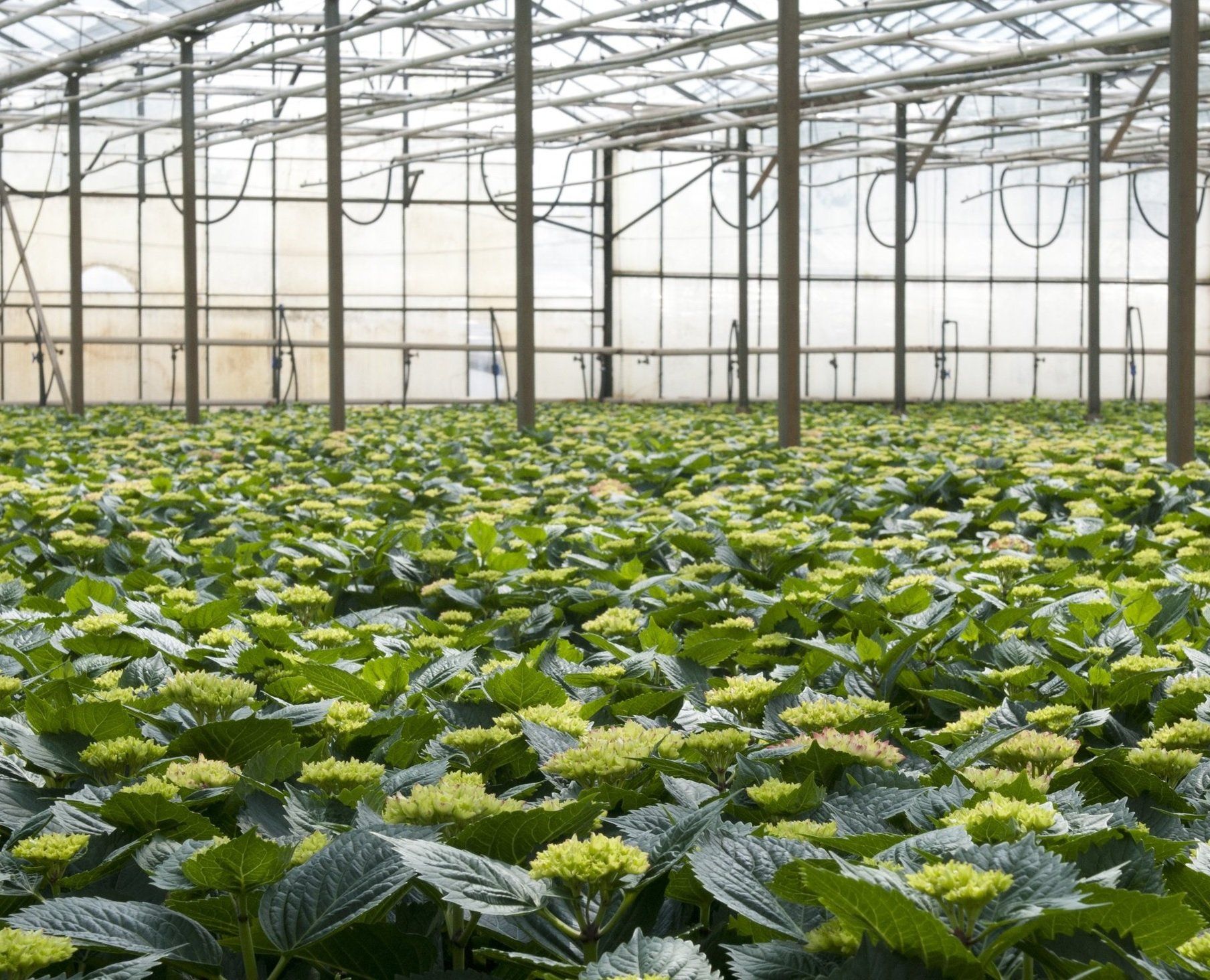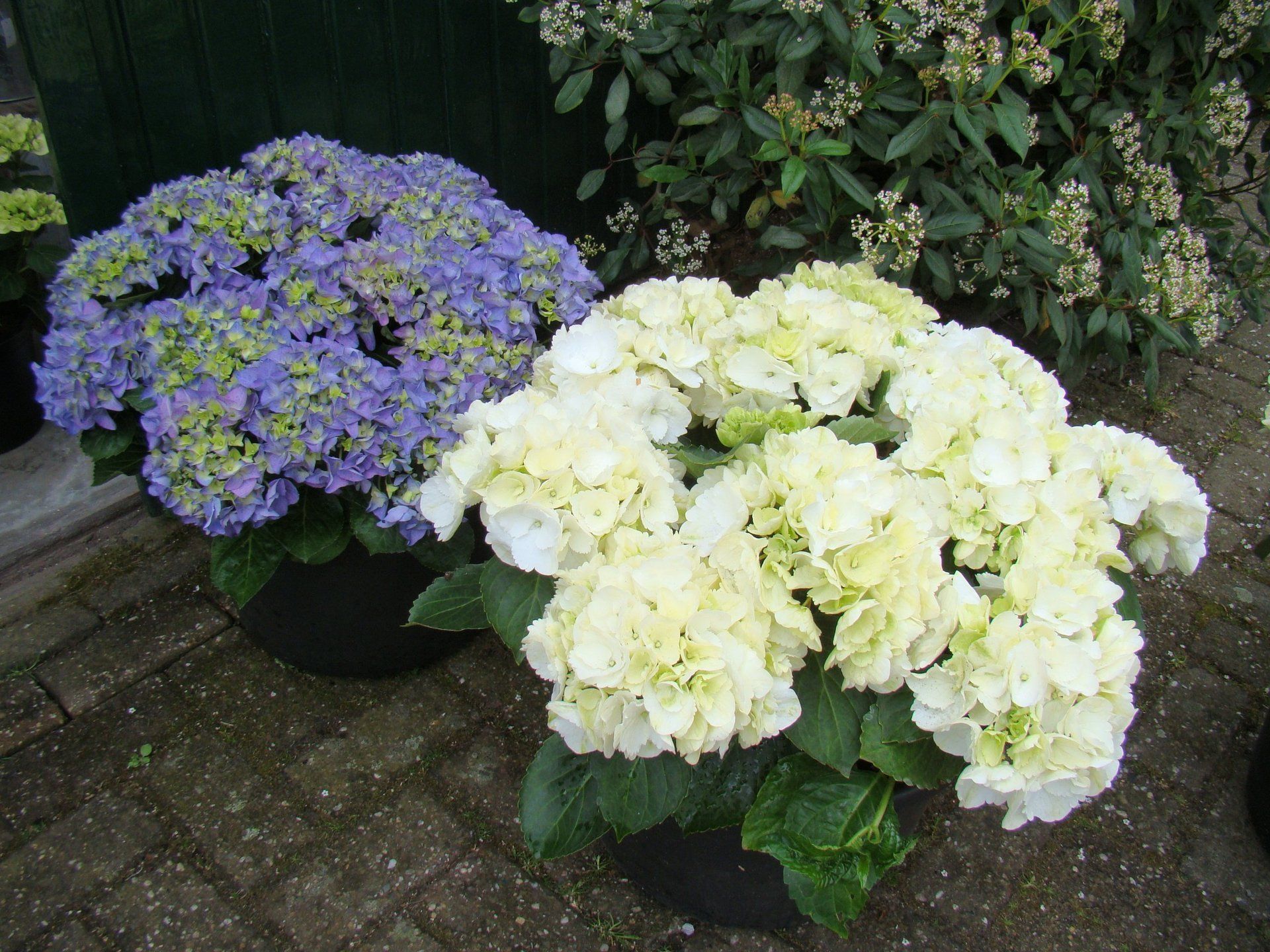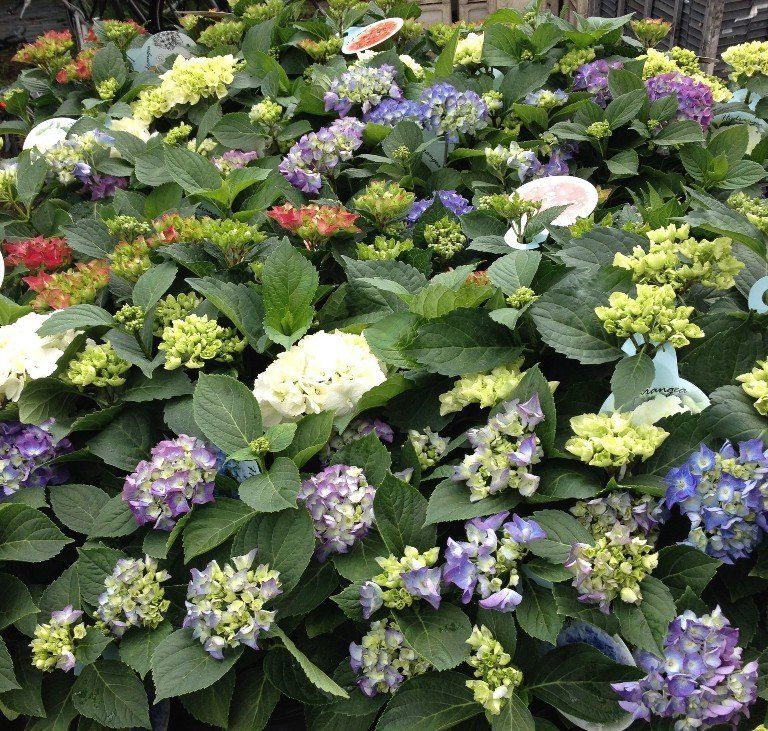Hydrangea's
Hydrangea's
At our business location on Kromstraat 55, we cultivate a diverse range of potted hydrangeas in different types and colors. This is accomplished through a combination of a 0.5-hectare greenhouse, 6 plastic tunnels, and a 3-hectare container field.
In 2017, we made a complete transition from primarily growing indoor hydrangeas to focusing exclusively on garden and patio hydrangeas in 23cm pots.
The growth
Our meticulous process for growing beautiful hydrangeas spans two years. In the first year, we root a cutting, nurturing it into a "half-grown plant" housed in a 15cm pot. During the summer of this initial year, the half-grown plant develops flower buds, which bloom into stunning flowers in the second year. To ensure a well-timed propagation and delivery of flowering plants in the subsequent summer, some of our semi-grown plants undergo winter dormancy in our greenhouse, while others are stored in a cold facility. This careful approach guarantees a steady supply of flourishing hydrangeas.

Handle consciously
In our commitment to energy conservation, we have adopted a practice of minimizing greenhouse heating and maintaining a "frost-free" temperature. However, the natural warmth generated by sunlight in the greenhouse facilitates the coloring of our hydrangeas' first flowers, typically appearing by late April or early May. This makes it an ideal time to adorn your terrace with these exquisite blooms, welcoming the first warm days of the year. It's worth noting that hydrangeas naturally blossom outdoors in garden settings from the end of June onwards.


Power supply
Hydrangeas have a high water requirement, which is evident in their international name 'hydrangea,' derived from the Greek word for 'water.' To foster optimal growth, ensure the plant is positioned in a semi-shaded area of the garden and receives an ample water supply. This will encourage the plant to thrive as a stunning shrub, producing abundant flowers each year. When placed on a terrace, it's crucial to provide regular watering (two to three times a week) during the summer months. Hydrangeas give clear signals when they're thirsty, as their flowers become wilted and droopy. A generous splash of water, coupled with shade or a cool breeze in the evening, will rejuvenate the flowers, restoring their vibrant and resilient nature.

Colour
The color of hydrangeas is influenced by the soil composition and the garden location. A pink hydrangea can transform into blue with the addition of potassium alum or when planted in "poor" soil conditions. Throughout the flowering period, which spans several months, hydrangea flowers often undergo color changes. A white hydrangea may transition to shades of pink or green, while colored hydrangeas can develop beautiful autumn hues over time.
More information and tips
For valuable insights on hydrangea care, pruning techniques, and creative possibilities with hydrangeas, I recommend visiting www.hydrangeaworld.com. This informative website is supported by esteemed Dutch hydrangea growers, offering a wealth of resources for enthusiasts and gardeners alike.


